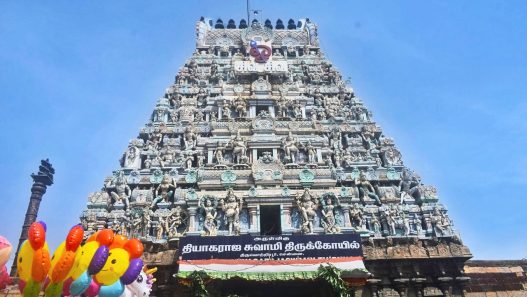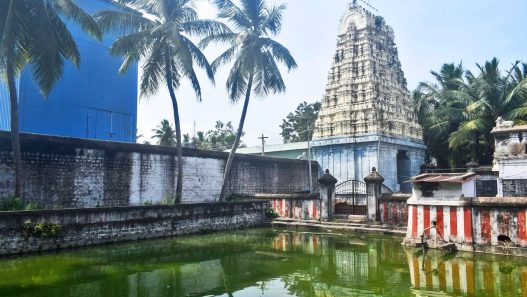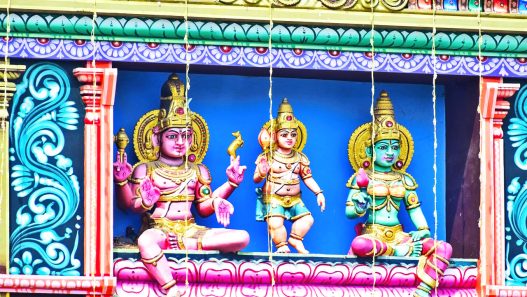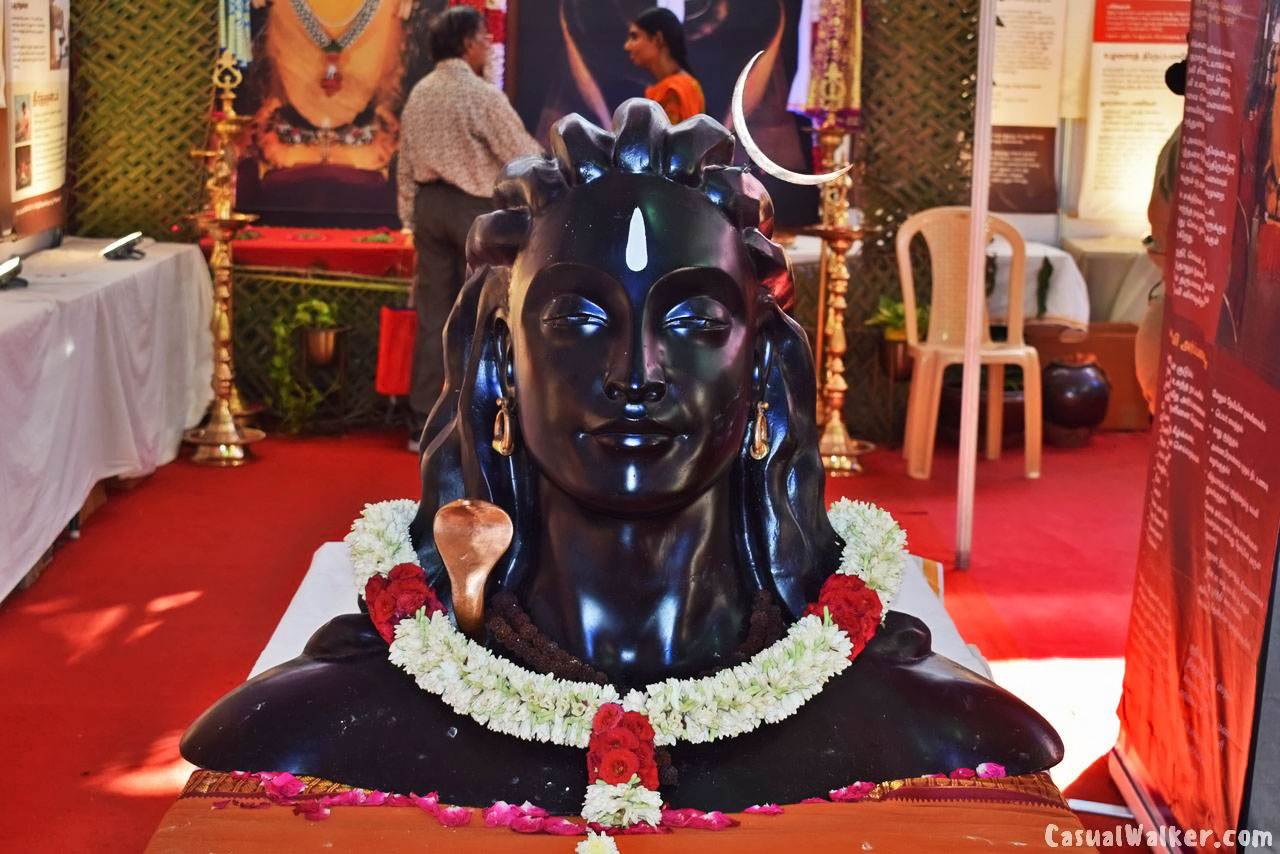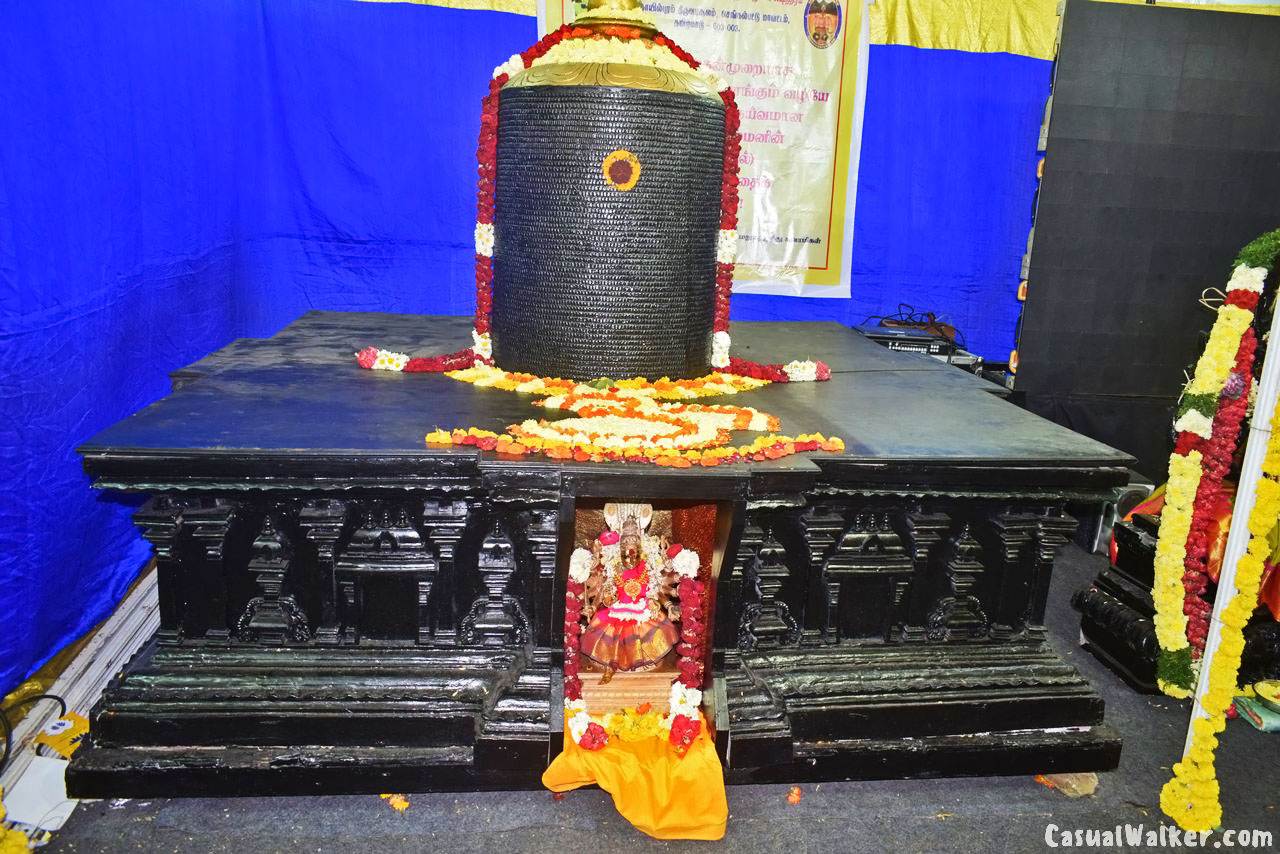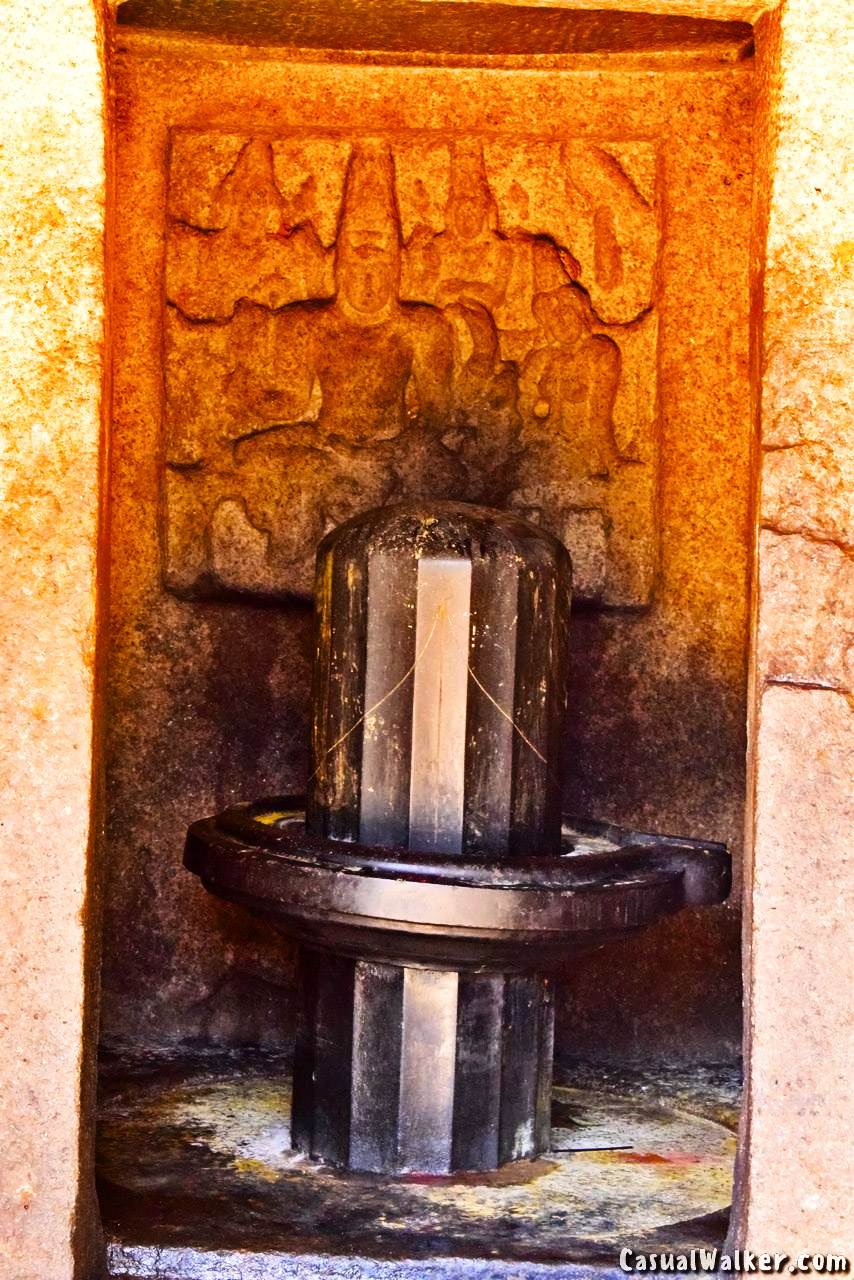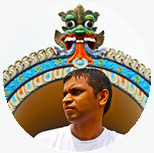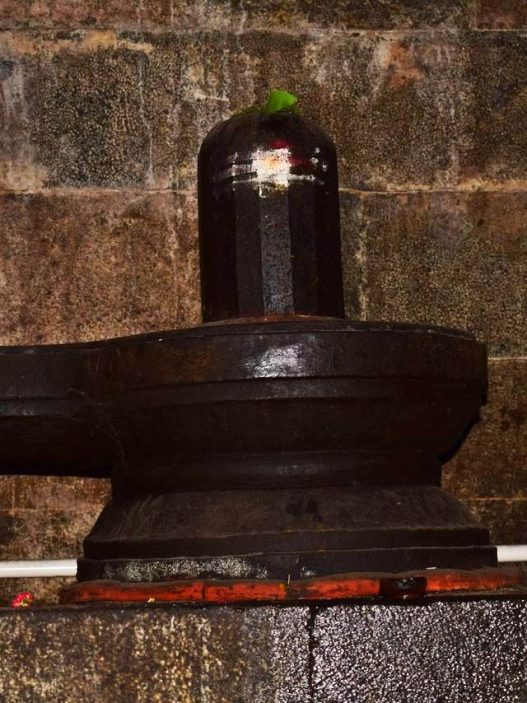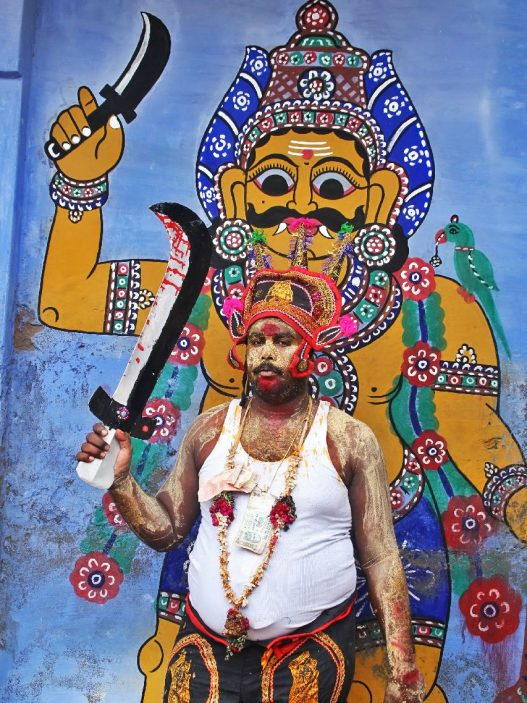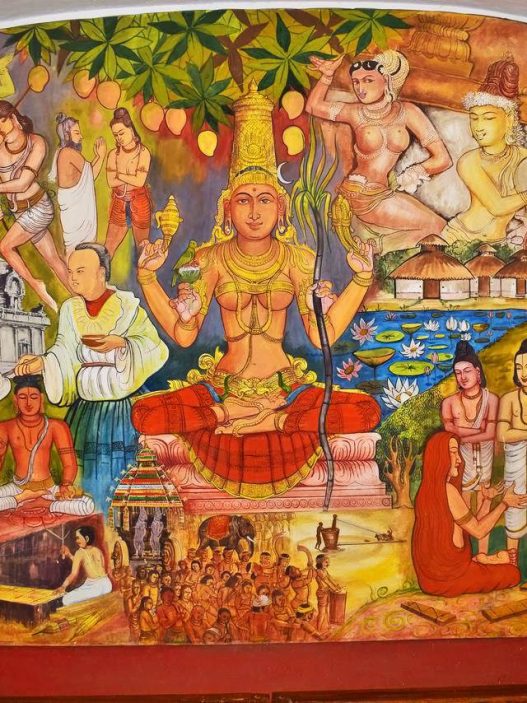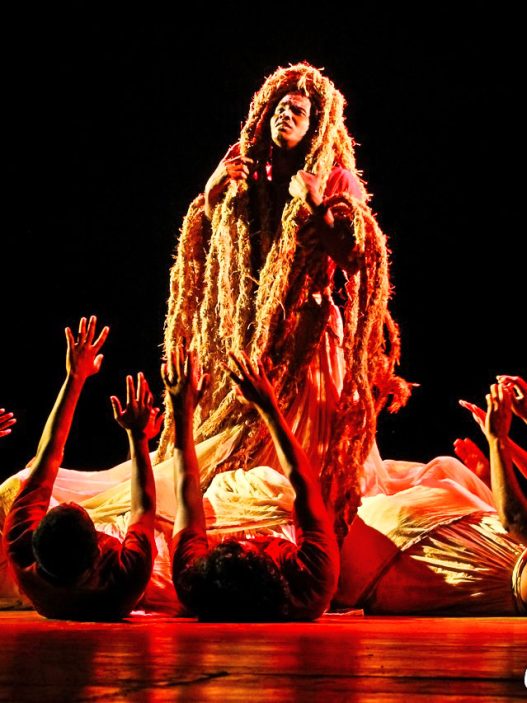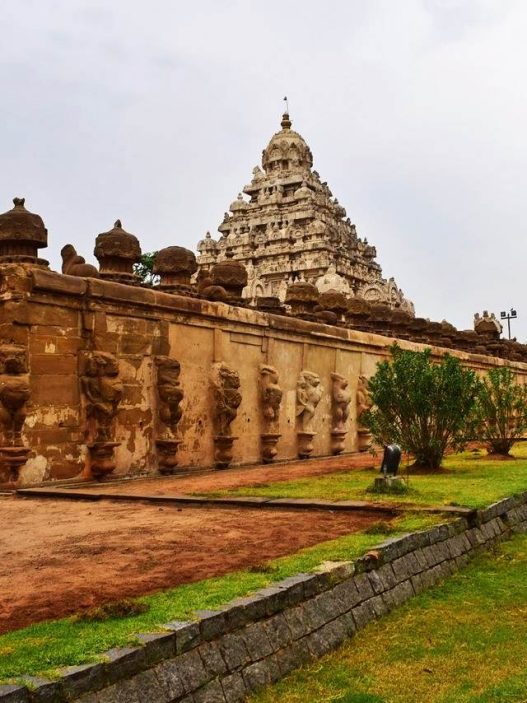Shiva Samhita / Śiva Samhitā (शिव-संहिता), the oldest and best book on Hatha Yoga – Sanskrit Veda discourse about practicing Yoga asanas, Pranayama, Tantric practices, Mudras, & Bandhas
– teachings of yoga & yogic philosophy by lord shiva to goddess parvati
Shiva Samhita is one of the oldest and one of the three (Gheranda Samhita & Hatha Yoga Pradipika) Sanskrit Veda texts on Hatha Yoga. The Shiva Samhita or the compendium of Lord Shiva, explains the practice of Yoga, Yogic philosophy, and Vedanta Shastra. It also makes an in-depth description of the Brahm Gyan or Self-knowledge taught by the Upanishads.
It’s Sanskrit verses texts are the conversation between Lord Shiva and his consort Goddess Parvati. Lord Shiva, is the representation of the creative and destructive power of the divine, Goddess Parvati represents the gentle feminine creative source of the universe. The Shiva Samhita text is beautifully composed, as the reader is listening to a conversation of Lord Shiva explaining the art of yoga to Goddess Parvati. Many scholars claim that the Shiva Samhita could be composed in or around the place Varanasi, the spiritual capital of India.
Shiva Samhita includes the elaborate teachings of Yoga and its practice. Even though a complete manuscript for the text is not available, it is as being a complete set of writings on Hatha yoga. The objective of Hatha Yoga is to create a harmonious balance between the physical body, prana (the vital energy), and mind – the soul.
Each of the Shiva Samhita chapters covers different aspects of Yoga practice. The term “Yoga” means the union of the spiritual with a human soul.
Shiva Samhita describes the in-depth concepts of yoga, its theory, and its practice. The discourse and teachings in all the five chapter texts primarily focused on how to perform yoga asanas, pranayama, tantric practices, mudras, and bandhas even the finer points of abstract Yogic philosophy.
Shiva Samhita addresses the complex human physiology, the text discusses 84 different asanas, four of them are described in detail along with the benefits of mantra repetition, also included five specific types of prana and the art of meditation. It highlights how a common person can practice Hata yoga and the benefits they can obtain by successfully practicing it. According to Shiva Samhita, there are around 72,000 nadis (which means “channel / flow”) in human body out of which 14 main nadis the Ida, Pingala, and Sushumna are considered most vital. Sushumna is the central passage through which the Kundalini is awakened.
Shiva Samhita is a beautiful text enumerating and describing how to practice and get succeed on a classical Yogic path. In the Shiva Samhita text’s Lord Shiva also elaborates on the barriers, that seeker may face on the spiritual path and outlines various strategies for dealing with them and our shadow aspects.
Currently, there are two versions of Shiva Samhita are available. One by Sirisa Chandra Bahadur Vasu and the other is by James Mallinson. The earliest English translation of Shiva Samhita is by Shri Chandra Vasu under the title “The Sacred Books of the Hindus” and another translation by Rai Bahadur and Srisa Chandra Vasu “The Sacred Books of the Hindus” attains a global audience. Later 2007 James Mallinson made a new global translation.
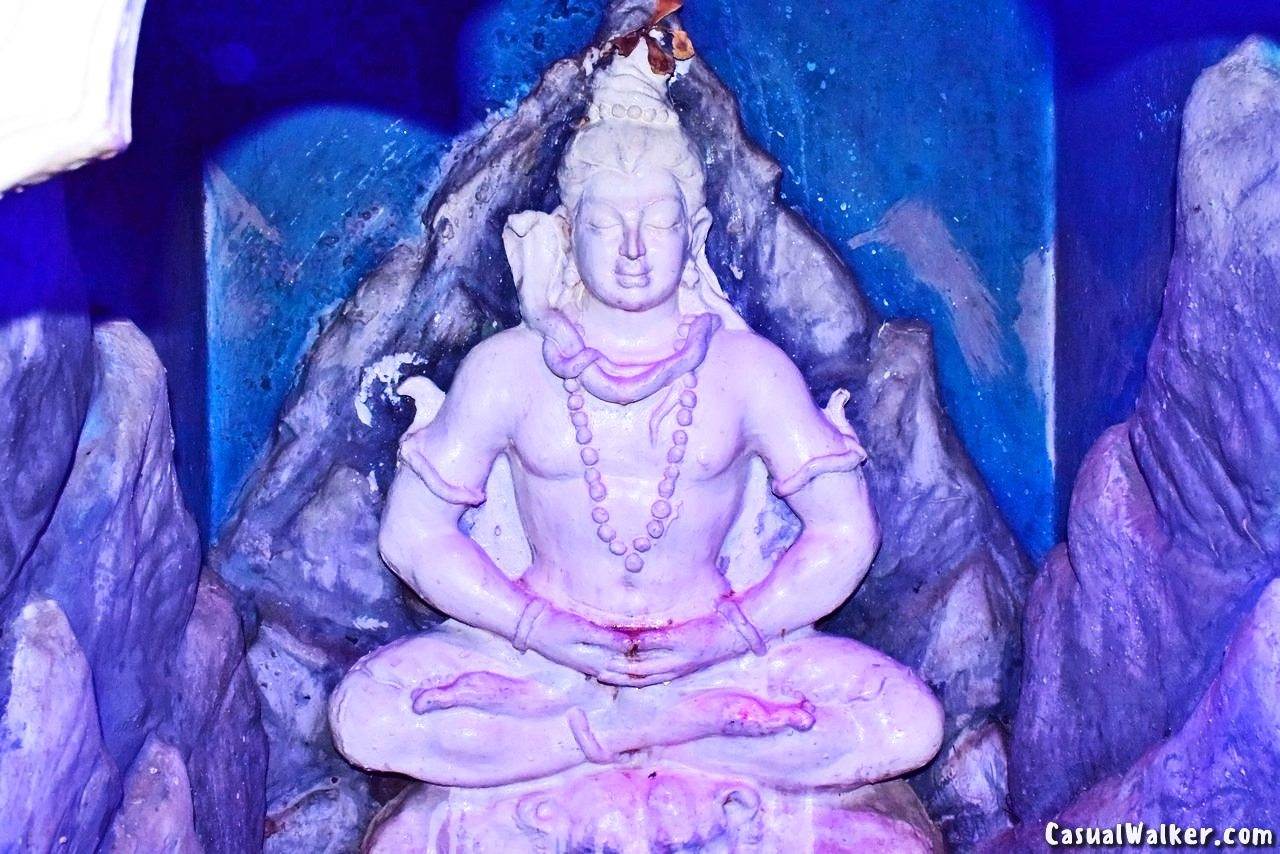
Download the Siva Samhita / Shiva Samhita / ?iva Samhit? Book in Sanskrit text along with English translation complied by Srisa Chandra Vasu: Download
Watch an Introductory video on Siva Samhita / Shiva Samhita / ?iva Samhit? by Love Sharma:
Check out the short English Summary of the Siva Samhita. We strongly recommend reading the original Sanskrit version with the guidance of a Yogic Guru to learn the true essence of Siva Samhita about Hatha Yoga. © Copyright M.P.Munro; January 2000.
Siva Samhita / Shiva Samhita / Śiva Samhitā
English Translation Summary
CHAPTER I.
Existence one only.
The Janana (Gnosis) alone is eternal; it is without beginning or end; there exists no other real substance. Diversities which we see in the world are results of sense-conditions; when the latter cease, then this Janana alone, and nothing else, remains.
I, Ishvara, the lover of my devotees, and Giver of spiritual emancipation to all creatures, thus declare the science of yoganasasana (the exposition of Yoga). In it are discarded all those doctrines of disputants, which lead to false knowledge. It is for the spiritual disenthralment of persons whose minds are undistracted and fully turned towards Me.
Differences of opinion.
Having studied all the Shastras and having pondered over them well, again and again, this Yoga Sastra has been found to be the only true and firm doctrine.
Jnanakanda
The wise Yogi, having realized the truth of karmakanda (works), should renounce them; and having left both virtue and vice, he must engage in jnanakanda (knowledge).
The Spirit.
As space pervades ajar both inside and out, similarly within and beyond this ever-changing universe, there exists one Universal Spirit.
Since the Spirit in its nature is not limited by time or space, it is therefore infinite, all-pervading, and entirety itself.
Since the Spirit is unlike this world, which is composed of five states of matter, that are false and subject to destruction, therefore, it is eternal. It is never destroyed.
Neither ether, air, fire, water, earth, nor their combinations, nor the Devas, are perfect; the Spirit alone is so.
Definition of a Paramahamsa.
When a person is free from the infinite distinctions and states of existence as caste, individuality etc., then he can say that he is indivisible intelligence and pure Unit.
Absorption or Involution.
The earth becomes subtle and is dissolved in water; water is resolved into the fire; fire similarly merges in the air; air gets absorption in ether, and ether is resolved in avidya (Ignorance), which merges into the Great Brahma.
Karma clothes the Jiva with the body.
When the fruits of karma have been enjoyed, the jiva is absorbed in the Parambrahma.
CHAPTER II
(1) The Microcosm.
In this body, the mount Meru – i.e., the vertebral column – is surrounded by seven islands; there are rivers, seas, mountains, fields; and lords of the fields too.
(2) The Nerve Centers.
In this body, which is called Brahmanda (microcosm, literally the mundane egg), there is the nectar-rayed moon, in its proper place, on the top of the spinal cord, with eight Kalas (in the shape of a semi-circle).
One of these, through the channel named Ida, goes over the body to nourish it, like the waters of the heavenly Ganges – certainly, this ambrosia nourishes the whole body through the channel of Ida.
It certainly swallows the vital secretions and ray-exuded nectar. Together with the atmosphere, the sun moves through the whole body.
The right-side vessel, which is pingala is another form of the sun, and is the giver of nirvana. The lord of creation and destruction (the sun) moves in this vessel through auspicious ecliptical signs.
(3) The Nerves.
In the body of man, there are 3,500,000 nadis; of them, the principal is fourteen;
Sushumna, Ida, Pingala, Gandhari, Hastijihvika, Kuhu, Saraswati, Pusa, Sankhini, Payaswani, Varuni, Alumbusa, Vishwodari, and Yasaswani. Among these Ida, Pingala and Sushumna are the chief.
Among these three, sushumna alone is the highest and beloved of the Yogis. Other vessels are subordinate to it in the body.
(4) The Pelvic Region.
In it is the supreme goddess Kundalini of the form of electricity, in a coil. It has three coils and a half (like a serpent), and is in the mouth of sushumna.
It represents the creative force of the world and is always engaged in creation. It is the goddess of speech, whom speech cannot manifest, and who is praised by all gods.
(5) The Abdominal Region.
In the abdomen there burns the fire – digester of food – situated in the middle of the sphere of the sun having twelve Kalas. Know this as the fire of Vaiswanara; it is born from a portion of my own energy and digests the various foods of creatures, being inside their bodies.
The wise Yogi, having kindled this Viswanaric fire according to proper rites, should sacrifice food into it every day, in conformity with the teachings of his spiritual teacher.
If the practiser of Yoga wishes to cross the ocean of the world, he should perform all the duties of his ashrama, (the condition of life), renouncing all the fruits of his works.
CHAPTER III.
On Yoga Practice. The Vayus.
The Prana lives there, adorned with various desires, accompanied by its past works, that have no beginning, and joined with egoism (ahankara.)
From the different modifications of the Prana, it receives various names; all of them cannot be stated here. Prana, apana, samana, udana, vyana, naga, kurma, Krikara, devadatta, and dhananjaya.
The Guru.
Now I will tell you, how easily to attain success in Yoga, by knowing which Yogis never fail in the practice of Yoga.
Only the knowledge imparted by a Guru, through his lips, is powerful and useful; otherwise, it becomes fruitless, weak and very painful.
There is not the least doubt that Guru is the father. Guru is mother, and Guru is God even; and as such, he should be served by all with their thought, word, and deed.
Let him salute his Guru after walking three times around him, and touching with his right hand his lotus- feet.
The Adhikari.
The person who has control over himself attains verily success through faith; none other can succeed. Therefore, with faith, Yoga should be practiced with care and perseverance.
The first condition of success is the firm belief that it (vidya) must succeed and be fruitful; the second condition is having faith in it; the third is respect towards the Guru; the fourth is the spirit of universal equality; the fifth is the restraint of the organs of sense; the sixth is moderate eating, these are all. There is no seventh condition.
Having received instructions in Yoga, and obtained a Guru who knows Yoga, let him practice with earnestness and faith, according to the method taught by the teacher.
The Place.
Let the Yogi go to a beautiful and pleasant place of retirement or a cell, assume the posture padmasana, and sitting on a seat (made of kusa grass) begin to practice the regulation of breath.
The wise beginner should keep his body firm and inflexible, his hands joined as if in supplication, and salute the Gurus on the left side. He should also pay salutations to Ganesha on the right side, and again to the guardians of the worlds and goddess Ambika who are on the left side.
The Pranayama.
The body of the person practicing the regulation of breath becomes harmoniously developed, emits a sweet scent, and looks beautiful and lovely. In all kinds of Yoga, there are four stages of pranayama – 1: Arambha-avastha (the state of beginning); 2: Ghata-avastha (the state of co-operation of Self and Higher Self); 3: Parichaya-avastha (knowledge); 4: Nishpattiavastha (the final consummation).
The following qualities are surely always found in the bodies of every Yogi – Strong appetite, good digestion, cheerfulness, handsome figure, great courage, mighty enthusiasm, and full strength.
The things to be renounced.
The Yogi should renounce the following; 1: Acids, 2: astringents, 3: pungent substances, 4: salt, 5: mustard, and 6: bitter things; 7: much walking, 8: early bathing (before sun-rise) and 9: things roasted in oil; 10 theft, 11: killing (of animals) 12: enmity towards any person, 13: pride, 14: duplicity, and 15: crookedness 16: fasting, 17: untruth, 18: thoughts other than those of moksha, 19: cruelty towards animals; 20 companionships of women, 21: worship of (or handling or sitting near) fire, and 22: much talking, without regard to pleasantness or unpleasantness of speech, and lastly, 23: much eating.
The means.
The great Yogi should observe always the following observances – He should use 1: clarified butter, 2: milk, 3: sweet food, and 4: betel without lime, 5: camphor; 6: kind words, 7: pleasant monastery or retired cell, having a small door; 8: hear discourses on truth, and 9: always discharge his household duties with vairagya (without attachment), 10: sing the name of Vishnu; 11: and hear sweet music, 12: have patience, 13: constancy, 14: forgiveness, 15: austerities, 16: purifications, 17: modesty, 18: devotion, and 19: service of the Guru.
The Yoga (pranayama) should not be practiced just after the meals, nor when one is very hungry; before beginning the practice, some milk and butter should be taken.
The first stage.
In the first stage of pranayama, the body of the Yogi begins to perspire. When it perspires, he should rub it well, otherwise, the body of the Yogi loses its dhatu (humors).
The second and third stages.
In the second stage, there takes place the trembling of the body; in the third, the jumping about like a frog; and when the practice becomes greater, the adept walks in the air.
Vayusiddhi.
When the Yogi, though remaining in padmasana, can raise in the air and leave the ground, then know that he has gained vayusiddhi (success over the air), which destroys the darkness of the world.
The truth-perceiving Yogi becomes free from disease, and sorrow or affliction; he never gets (putrid) perspiration, saliva, and intestinal worms.
The wise practitioner surely destroys all his karma, whether acquired in his life or in the past, through the regulation of breath.
Increase of Duration.
Then gradually he should make himself able to practice for three gharis (one hour and a half at a time, he should be able to restrain breath for that period). Through this, the Yogi undoubtedly obtains all the longed-for powers.
Siddhis or Perfections.
The Yogi acquires the following powers: vakya siddhi (prophecy), transporting himself everywhere at will (kamachari), clairvoyance (duradristhi), clairaudience (durashruti), subtle-sight (shushma-drishti), and the power of entering another’s body (parakaypravesana), turning base metals to gold by rubbing them with his excrements and urine, and the power of becoming invisible, and lastly, moving in the air.
II. The Ghata Avasta.
When, by the practice of pranayama, the Yogi reaches the state of ghata (water-jar), then for him there is nothing in this circle of universe which he cannot accomplish.
Whatever object the Yogi perceives, let him consider it to be the spirit. When the modes of action of various senses are known, then they can be conquered.
III. The Parichaya
After this, through exercise, the Yogi reaches the Parichaya-avastha. When the air leaving the sun and moon (the right and the left nostrils), remains unmoved and steady in the ether of the tube sushumna, then it is in the parichaya state.
Then, let the Yogi destroy the multitude of karmas by the pranava (OM); let him accomplish kayavyhua (a mystical process of arranging the various skandas of the body), in order to enjoy or suffer the consequences of all his actions in one life, without the necessity of re-birth.
IV. The Nishpatti.
When the skillful Yogi, knowing the laws of action of prana and apana, can drink the cold air through the concentration of the mouth, in the form of a crow-bill, then he becomes entitled to liberation.
The postures.
There are eighty-four postures, of various modes. Out of them, four ought to be adopted, which I mention below:— 1, Siddhasana; 2, Padmasana; 3, Ugrasana; 4, Svastikasana.
1. Siddhasana.
The Siddhasana that gives success to the practitioner is as follows: Pressing with care by the heel the yoni, the other heel the Yogi should place on the lingam; he should fix his gaze upwards on the space between the two eyebrows, should be steady, and restrain his senses. His body particularly must be straight and without any bend. The place should be a retired one, without any noise.
2. The Padmasana.
I now describe the Padmasana which wards off (or cures) all diseases:— Having crossed the legs, carefully place the feet on the opposite thighs {i.e., the left foot on the right thigh, and vice versa); cross both the hands and place them similarly on the thighs; fix the sight on the tip of the nose; pressing the tongue against the root of the teeth, (the chin should be elevated, the chest expanded) then draw the air slowly, fill the chest with all your might, and expel it slowly, in an unobstructed stream.
3. The Ugrasana.
Stretch out both the legs and keep them apart; firmly take hold of the head by the hands, and place them on the knees. This is called ugrasana (the stern-posture), it excites the motion of the air, destroys the dullness and uneasiness of the body, and is also called paschima-uttana (the posterior crossed posture.) That wise man who daily practices this noble posture can certainly induce the flow of the air up through the anus.
Those who practice this obtain all the siddhis; therefore, those, desirous of attaining power, should practice this diligently.
4. The Svastikasana.
Place the soles of the feet completely under the thighs, keep the body straight, and sit at ease. This is called the Svastikasana.
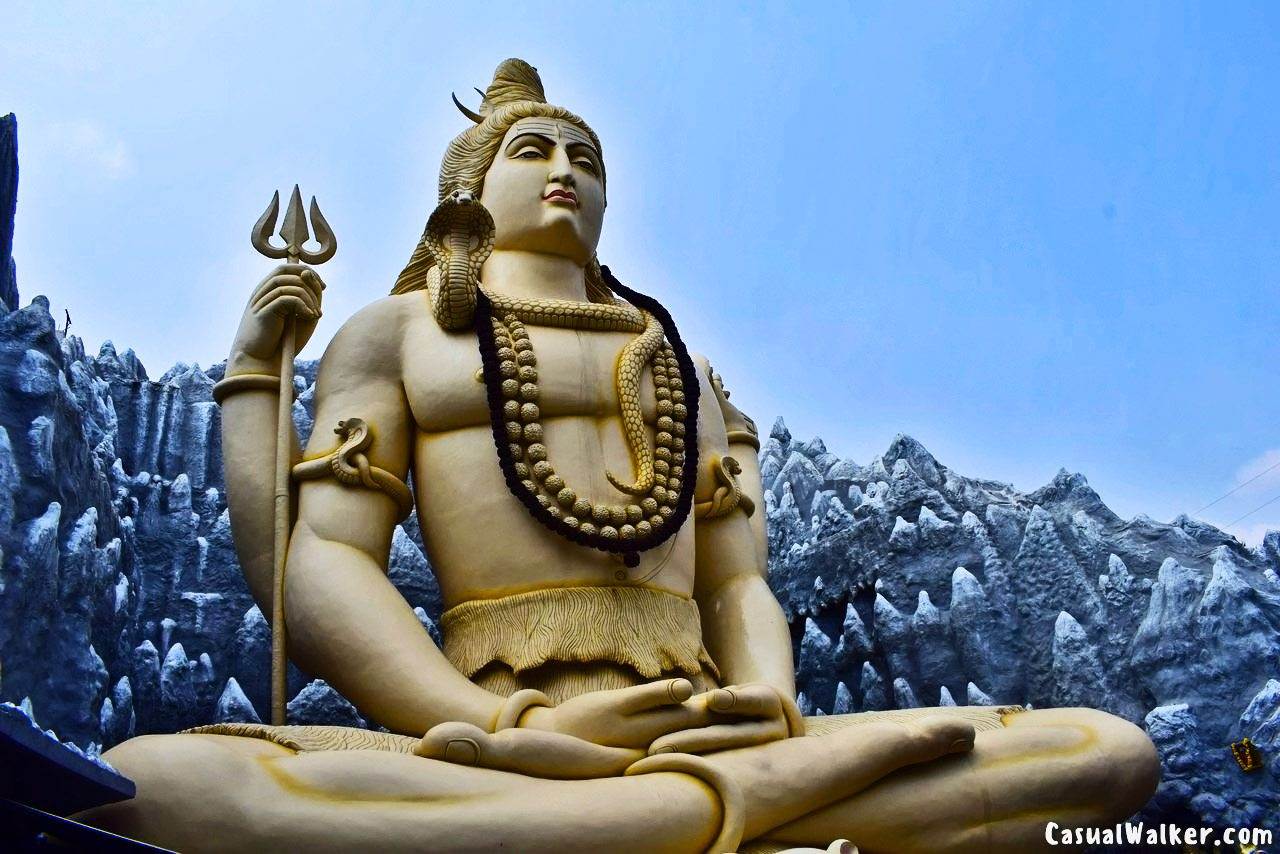
CHAPTER IV.
Yoni-Mudra. The Sacred Drink of the Kaulas.
First with a strong inspiration fix the mind in the adhar lotus. Then engage in contracting the Yoni, which is situated in the perineal space.
He who practices Yoni-Mudra is not polluted by sin, were he to murder a thousand Brahmanas or kill all the inhabitants of the three worlds —
The Awakening of Kundalini.
When the sleeping goddess Kundalini is awakened, through the grace of Guru, when all the lotuses and the bonds are readily pierced through and through.
Out of the many mudras, the following ten are the best: (1) Mahamudra, (2) Mahabandha, (3) Mahavedha, (4) Khechari, (5) Jalandhar, (6) Mulabandha, (7) Viparitkarana, (8) Uddana, (9) Vajrondi, and (10) Shaktichalana.
CHAPTER V.
Parvati. O Lord, O beloved Shankar! tell me, for the sake of those whose minds search after the supreme end, the obstacles and the hindrances to Yoga.
Siva. Hear, O Goddess! I shall tell thee, all the obstacles that stand in the path of Yoga. For the attainment of emancipation, enjoyments (bhoga) are the greatest of all impediments.
Dharma.
The following are the obstacles which dharma interposes: ablutions, worship of deities, observing the sacred days of the moon, fire sacrifice, hankering after moksha, vows and penances, fasts, religious observances, silence, the ascetic practices, contemplation, and the object of contemplation, mantras, and alms-giving, world-wide fame, excavating and endowing of tanks, wells, ponds, convents, and groves: sacrifices, vows of starvation, Chandrayana, and pilgrimages.
Jnana (Knowledge-obstacles).
Now I shall describe, O Parvati, the obstacles which arise from knowledge. Sitting in the gomukh posture and practicing dhauti (washing the intestines by Hatha yoga). Knowledge of the distribution of the nadis (the vessels of the human body), learning of pratyahara (subjugation of the senses), trying to awaken the kundalini force, by moving quickly the belly (a process of Hatha yoga), entering into the path of the indriyas, and knowledge of the action of the nadis; these are the obstacles. Now listen to the mistaken notions of diet, O Parvati.
Brahman is in the body or He is the maker of form, or He has a form, or He has no form, or He is everything – all these consoling doctrines are obstacles. Such notions are impediments in the shape of Jnana (knowledge).
Four Kinds of Yoga.
Yoga is of four kinds: First mantra yoga, second Hatha yoga, third laya yoga, fourth raja yoga, which discards duality.
(Mild) entitled to Mantra yoga.
Men of small enterprise, oblivious, sickly and finding faults with the teachers; avaricious, sinful gourmands, and attached helplessly to their wives; fickle, timid, diseased, not independent, and cruel; those whose characters are bad and who are weak – know all the above to be mild sadhaks. With great efforts such men succeed in twelve years; then the teachers should know fit for mantrayoga.
(Moderate) entitled to Layayoga.
Liberal-minded, merciful, desirous of virtue, sweet in their speech; who never go to extremes in any undertaking – these are middling. These are to be initiated by the teacher in layayoga.
(Ardent) entitled to Hatha Yoga.
Steady-minded, knowing the Laya-Yoga, independent, full of energy, magnanimous, full of sympathy, forgiving, truthful, courageous, full of faith, worshippers of the lotus-feet of their Gurus, engaged always in the practice of Yoga – know such men to be adhimatra. They obtain success in the practice of Yoga within six years, and ought to be initiated in Hatha yoga and its branches.
(The most ardent) entitled to all Yogas.
Those who have the largest amount of energy, are enterprising, engaging, heroic, who know the Shastras, and are persevering, free from the effects of blind emotions, and, not easily confused, who are in the prime of their youth, moderate in their diet, rulers of their senses, fearless, clean, skillful, charitable, a help to all; competent, firm, talented, contented, forgiving, good-natured, religious, who keep their endeavors secret, of sweet speech, peaceful, who have faith in scriptures and are worshippers of God and Guru, who are averse to fritter away their time in society, and are free from any grievous malady, who are acquainted with the duties of the adhimatra, and are the practitioners of every kind of Yoga —undoubtedly, they obtain success in three years; they are entitled to be initiated in all kinds of Yoga, without any hesitation.
Invocation of the shadow (pratikopasana).
The invocation of Pratika (shadow) gives to the devotee the objects seen as well as unseen; undoubtedly, by its very sight, a man becomes pure.
He who daily sees his shadow in the sky will get his years increased and will never die an accidental death.
When the shadow is seen fully reflected in the field of the sky, then he obtains victory; and conquering the vayu, he goes everywhere.
Raj Yoga.
Let him close the ears with his thumbs, the eyes with index fingers, the nostrils with the middle fingers, and with the reaming four fingers let him press together the upper and lower lips. The Yogi, by having thus firmly confined the air, sees his soul in the shape of light.
Anahad Sounds.
The first sound is like the hum of the honey-intoxicated bee, next to that of a flute, then a harp; after this, by the gradual practice of Yoga, the destroyer of the darkness of the world, he hears the sounds of ringing bells; then sounds like the roar of thunder. When one fixes his full attention on this sound, being free from fear, he gets absorption, O my beloved!
When the mind of the Yogi is exceedingly engaged in this sound, he forgets all external things and is absorbed in this sound.
A Secret.
There is no posture like that of Siddhasana, no power like that of kumbha, no mudra like the Khechari, and no absorption like that of nada (the mystic sound).
Now I shall describe to thee, O dear, the foretaste of salvation, knowing which even the sinful aspirant may obtain salvation.
Sitting in the padmasana posture, renouncing the society of men, let the Yogi press the two vijnana nadis (vessels of consciousness, perhaps coronal arteries) with his two fingers.
By obtaining success in this, he becomes all happiness and unstained; therefore, let him endeavor with all his might, in order to ensure success.
Various kinds of Dharana.
Let the Yogi seat himself in the padmasana, and fix his attention on the cavity of the throat, let him place his tongue at the base of the palate; by this, he will extinguish hunger and thirst.
Below the cavity of the throat, there is a beautiful nadi (vessel) called kurma; when the Yogi fixes his attention on it, he acquires great concentration of the thinking principle (chitta).
When the Yogi constantly thinks that he has got a third eye – the eye of Shiva – in the middle of his forehead, he then perceives a fire brilliantly like lightning. By contemplating this light, all sins are destroyed, and even the most wicked person obtains the highest end.
He who contemplates on sunya (void or vacuum or space), while walking or standing, dreaming or waking, becomes altogether ethereal and is absorbed in the chid-akasa.
The great Yogi beholds the light, pure as a holy mountain (Kailas), and through the force of his exercise in it, he becomes the lord and guardian of the light.
Of the four kinds of food (i.e., that which is chewed, that which is sucked, that which is licked and that which is drunk), which a man takes, the chyle fluid is converted into three parts. The best part (or the finest extract of food) goes to nourish the linga sharira or subtle body (the seat of force). The second or middle part goes to nourish this gross body composed of seven dhatus.
The Six Chakras.
1 . Muladhar chakra.
2. Swadhisthan Chakra. (Prostatic Plexus).
3. Manipur Chakra.
4. Anahat Chakra.
5. Vishuddha Chakra.
6. Ajha Chakra.
7. The Thousand-Petalled Lotus.
The Yogi becomes free from the chain by his own exertion. The importance of the contemplation of the two-petalled lotus cannot be fully described. Even the gods like Brahma, etc., have learnt only a portion of its grandeur from me.
Brahmarandhra.
By simply remembering this, one obtains the knowledge of Brahman, all sins are destroyed, and one is never born again as a man.
The Sacred Triveni (Prayag).
Between the Ganges and the Jamuna, flows this saraswati: by bathing at their junction, the fortunate one obtains salvation.
We have said before that the ida is the Ganges and the pingala is the daughter of the sun (the Jamuna), in the middle the sushumna is the saraswati; the place where all three join is a most inaccessible one.
He who performs the funeral rites of his ancestors at the junction of these three rivers (Triveni) procures salvation for his ancestors and himself reaches the highest end.
If the mind becomes steadily fixed even for half a second at the Brahmarandhra, one becomes free from sins and reaches the highest end.
The Mystic Mount Kailas.
Its name is verily the Kailas mount, where dwells the great Lord (Shiva), who is called Nakula and is without destruction, and without increase or decrease.
When the mind is steadily fixed at this place, which is the residence of the Great Swan and is called Kailas, then that Yogi, devoid of disease and subduing all accidents, lives for a great age, free from death.
By this knowledge, the modifications of the mind are suspended, however active they may be; therefore, let the Yogi untiringly and unselfishly try to obtain this knowledge.
The Great Void, whose beginning is void, whose middle is void, whose end is void, has the brilliancy of tens of millions of suns, and the coolness of tens of millions of moons. By contemplating continually this, one obtains success.
Let him practice with energy daily this dhyana, within a year he will obtain all success undoubtedly.
The Rajadhiraj Yoga.
Sitting in the Svastikasana, in a beautiful monastery, free from all men and animals, having paid respects to his Guru, let the Yogi practice this contemplation.
He is the Yogi, he is the true devotee, he is worshipped in all worlds, who contemplates the Jivatma and the Paramatma as related to each other as “I” and “Am”, who renounces “I” and “Thou” and contemplates the indivisible; the Yogi free from all attachment takes shelter of that contemplation in which, through the knowledge of super-imposition and negation, all is dissolved.
He who meditates on this movable and immovable universe, which is really unmanifest, but abandons the supreme Brahma – directly manifest – is verily absorbed in this universe.
The Yogi, free from all attachment, consistently exerts himself in keeping up this practice that leads to Gnosis, so that there may not be again the upheaval of Ignorance.
The hathayoga cannot be obtained without the rajayoga, nor can the rajayoga be obtained without the hathayoga. Therefore, let the Yogi first learn Hatha yoga from the instructions of the wise Guru.
He who, while living in this physical body, does not practice Yoga, is merely living for the sake of sensual enjoyments.
From the time he begins till the time he gains perfect mastery, let the Yogi eat moderately and abstemiously, otherwise, however clever, he cannot gain success.
The wise Yogi in an assembly should utter words of the highest good, but should not talk much: he eats a little to keep up his physical frame; let him renounce the company of men, let him renounce the company of men, verily, let him renounce all company: otherwise he cannot attain mukti (salvation); verily, I tell you the truth.
The Mantra (Om, Aim, Klim, Strim).
Now I shall tell you the best of practices, the Japa of mantra: from this, one gains happiness in this as well in the world beyond this.
Let him learn this mantra from his Guru, let him repeat it neither too fast nor too slowly, keeping the mind free from all doubts, and understanding the mystic relation between the letters of the mantra.
The Yogi, who has controlled his senses, repeats this mantra one hundred thousand times, gains the power of attracting others.
O, Great Goddess! this science of Shiva is a great science (mahavidya), it had always been kept secret. Therefore, this science revealed to me, the wise should keep secret.
© Copyright M.P.Munro; January 2000.
![]()

Famous Lord Shivan Temples you may like to Visit:
Kanchi Kailasanathar temple, Kanchipuram – Best & Famous Shiva Temple In India – Visit, Travel Guide
Jurahareshwarar Temple, Kanchipuram – Best & Famous Shiva Temple In India – Visit, Travel Guide

